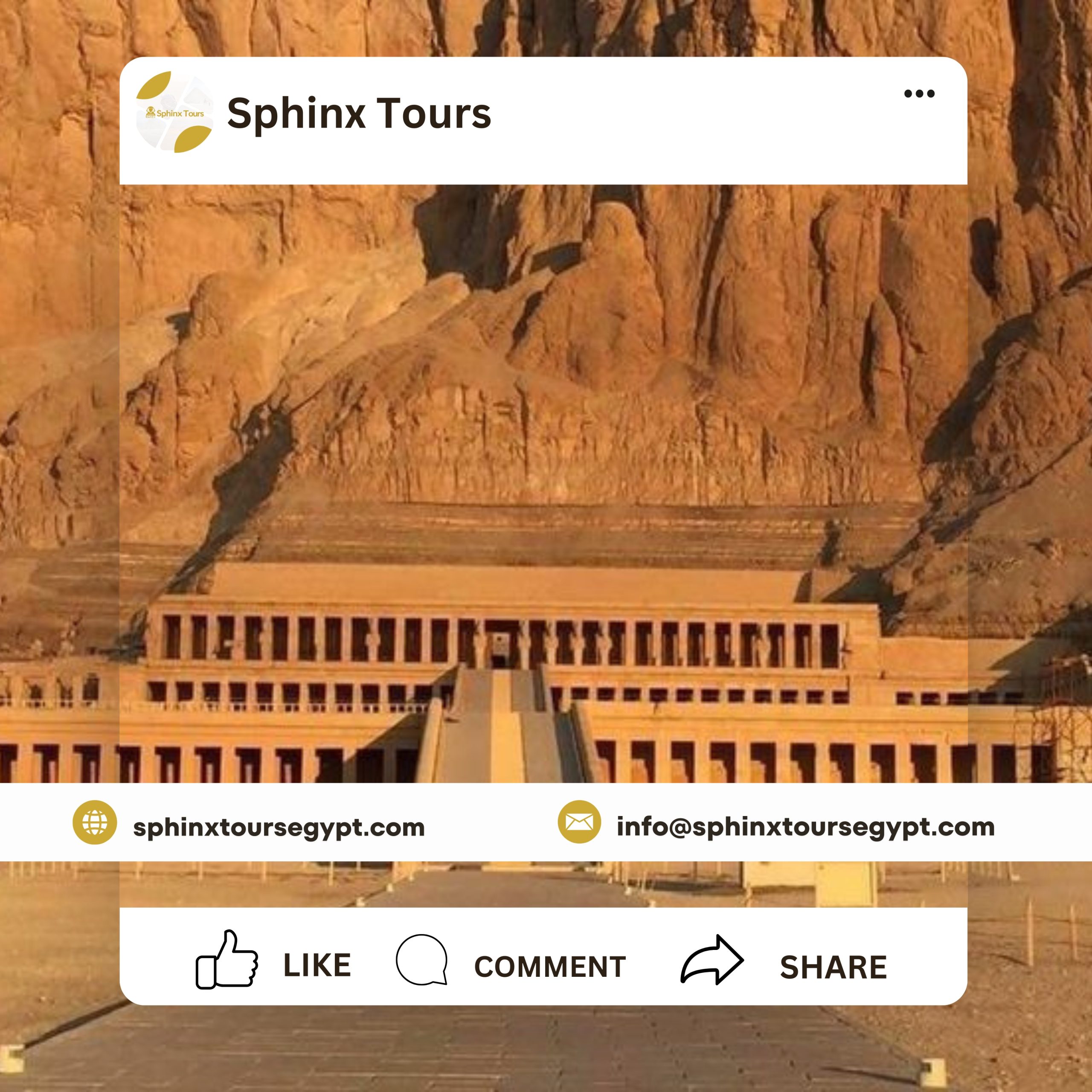Deir el-Bahari Temple. Hatshepsut Temple in Luxor
The site of Deir el-Bahari is famous for containing the funerary temple of Queen Hatshepsut (c. 1473-1458 BC) on the West Bank of Luxor. The temple consists of three layers in the valley, where the funerary rituals were performed for both Queen Hatshepsut and her father, King Thutmose I, where offerings were made to ensure the queen’s soul an eternal and safe life in the afterlife.
The site of Deir el-Bahari was sacred because it was associated with the goddess Hathor, who patronized the kings of Egypt, most notably the god Horus, the first and mythical ruler of Egypt. It was believed that the embodiment of this goddess was in the same hills whose shadow falls on the temple of Hatshepsut, and on the other side of it where the tombs of some of the most famous kings of ancient Egypt in the New Kingdom are located in the Valley of the Kings area. We see panels bearing prayers to Hathor in the form of a cow emerging from these mountains, the top of which appears in the form of a pyramid.
The location of the mortuary temple on the West Bank was associated with the idea of the sunset as the sun god’s journey into the underworld. This temple was also on the other side of the Temple of Amun at Karnak on the East Bank, where the statues of the god Amun, his wife Mut, and their son Khonsu used to march in an annual ceremonial procession known as the Opet Festival and the Beautiful Valley Festival, crossing the Nile and visiting the royal mortuary temples, including the Temple of Hatshepsut, which was one of the important stations of this procession. Hatshepsut was preceded by another king in establishing his mortuary temple in this important area by about 600 years, King Mentuhotep Nebhepetre (c. 2055-2004 BC) of the Middle Kingdom, who built his temple in a stepped form, from which Queen Hatshepsut borrowed the design of her temple.
Queen Hatshepsut (c. 1473-1458 BC) built a magnificent temple at Deir el-Bahari, on the West Bank of Luxor, facing the Karnak Temple, the main sanctuary of Amun on the East Bank. Hatshepsut’s temple was called in ancient Egyptian “Geser Geserro”, meaning “the holiest of sanctuaries”, and was designed by Senenmut, who held many titles, including “Manager of the Estates of Amun”.
The temple consists of three levels, each with a row of columns at its end. On the top level, an open courtyard is located behind the row of columns, preceded by statues of Hatshepsut in the form of Osiris, the god of the dead.
The “Gesr Gesro” is considered a funerary temple for Queen Hatshepsut, where rituals were performed for her after her death when she transformed into the status of the god Osiris. The temple was not dedicated to her alone, as the temple included parts dedicated to her father, King Thutmose I, the goddess Hathor, and the god Anubis. An open-air shrine was also dedicated to the sun god “Ra Horakhty“, and there is a great place dedicated to Amun. At the end of the upper courtyard, on the main axis of the temple, a passage was cut into the mountain that ends with the Holy of Holies. The walls of the temple are covered with scenes representing temple rituals, religious festivals, and the transportation of obelisks from the quarries to the Karnak Temple. Perhaps the most distinctive scene is that on the central terrace, which represents Hatshepsut’s expedition to the land of Punt, which is probably located near present-day Eritrea. Its inhabitants, homes, and surrounding environment are depicted, in addition to the riches and exotic animals that the Egyptians brought with them from there. On the other side, it is depicted how Hatshepsut became the legitimate king of the country, not only by confirming her father Thutmose I’s appointment of her as his legitimate heir, but also that her father is the god Amun himself.


0 Comment